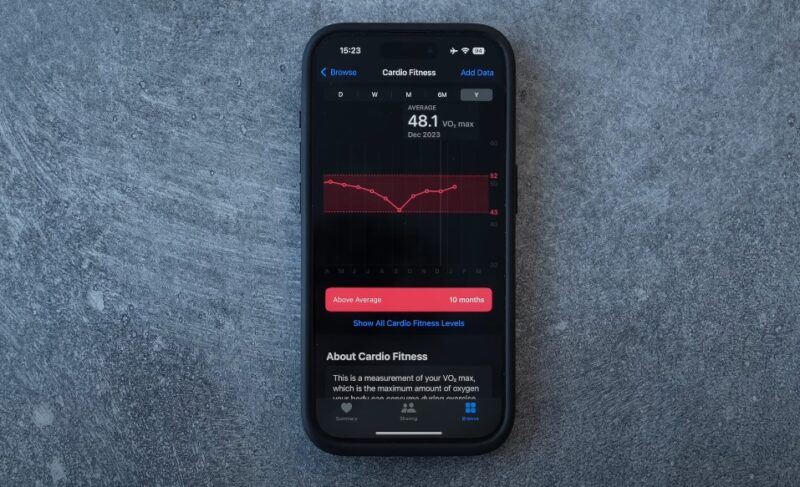Training for a half marathon is an exciting challenge, but one of the biggest questions most people have is how long it will take to prepare. It can be different for everyone depending on your fitness level and running experience, but with the right approach, it’s totally doable!
I remember when I first thought about running one, and I wondered how long I’d need to get ready. The truth is you need somewhere between 10 and 16 weeks to prepare, but there are many parameters you should take into consideration when preparing.
Let’s break it down together and see what kind of timeline works best for you, no matter where you’re starting from.
Table of Contents
ToggleWhat is Expected Time to Prepare for a Half Marathon?
Training for a half marathon typically takes between 10 to 16 weeks.
If you’re new to running, expect to need closer to 16 weeks. If you have some running experience and are reasonably fit, 12 weeks is often sufficient. For those with significant running experience and a strong fitness base, 10 weeks might be enough.
If you’re already active but new to running, you might find a 12-week plan to work well. On the other hand, if you encounter setbacks or need more time to build up, don’t hesitate to extend your training period.
Set Realistic Training Goals
When setting goals for your half marathon training, it’s crucial to be practical and honest about what you can achieve. Start by understanding your current fitness level and how much time you can dedicate to training each week. Setting clear and achievable goals will keep you motivated and on track throughout your preparation.
Define Your Main Objective
Decide on the primary goal for your half marathon. If you’re new to running, your main objective might be simply to complete the race. For more experienced runners, you might aim for a specific finish time. Having a clear objective helps guide your training and keeps you focused.
Break It Down
Divide your main goal into smaller, manageable milestones. For instance, if your goal is to finish the race in under two hours, set intermediate targets such as running a 5K within a certain time. These smaller goals make your training process less overwhelming and provide regular opportunities for achievement.
Consider Your Schedule

Think about how your training fits into your daily life. Factor in your work, family commitments, and other responsibilities. Make sure your goals are ambitious but realistic given your available time. This ensures that your training plan is both challenging and manageable.
Be Specific and Measurable
Set goals that are specific and measurable. Instead of a vague aim like “improve my running,” specify your target, such as “run 13.1 miles in under two hours.” This precision helps you track your progress and stay motivated as you work towards your goal.
Adjust as Needed
Be prepared to adjust your goals if necessary. Unexpected challenges might arise, and you may need to reassess your targets. Flexibility is key to staying on track, so adjust your goals as needed while keeping your overall objective in sight. Also, consider using flexibility app.
Create a Training Plan

Once you’ve set your goals, it’s time to map out your training plan. This is where you outline how you’ll reach your objectives and stay on track. Here’s how to build a solid plan:
Choose a Training Schedule
Select a training plan that fits your current fitness level and goals. Many plans are available online, ranging from beginner to advanced. If you’re new to running, start with a basic plan that gradually increases your mileage. For more experienced runners, look for plans that include speed work and longer runs.
Plan Your Weekly Workouts
Break down your training into weekly workouts. Include a mix of easy runs, long runs, speed work, and rest days. A typical week might consist of three to four running days, with one long run, one day of speed work, and one or two easy runs. Rest days are crucial for recovery and preventing injury, so don’t skip them.
Cross-Training
Add cross-training activities to your plan to improve overall fitness and reduce the risk of injury. Activities like cycling, swimming, or strength training can complement your running and help build endurance. Aim for one or two cross-training sessions each week.
Track Your Progress
Use a running app or a journal to track your workouts and monitor your progress. Recording your runs, distances, and times helps you see how you’re improving and adjust your plan if needed. Regular tracking also keeps you accountable and motivated.
Adjust as Needed
Be flexible with your training plan. Life happens, and you may need to adjust your schedule due to unexpected events or changes in your fitness level. Don’t be discouraged if you miss a workout or need to modify your plan. The key is to stay committed and make adjustments to stay on track.
Include Key Workouts

To get the most out of your training plan, focus on specific workouts that boost endurance, speed, and overall fitness. Here’s how to structure these essential workouts:
Long Runs
Long runs are crucial for building endurance. Schedule one long run each week, gradually increasing the distance as you progress. This helps your body get used to running for longer periods. Aim to reach a distance close to the race length before tapering in the final weeks.
Speed Work
Speed work improves your pace and running efficiency. Add interval training or tempo runs to your routine. For intervals, alternate between fast running and recovery periods. Tempo runs involve maintaining a challenging pace for a set distance. Both types of speed work help enhance your speed and stamina.
Easy Runs
Easy runs are important for recovery and maintaining your mileage without overtraining. Run at a comfortable pace where you can hold a conversation. Include easy runs between more intense workouts to help your body recover and adapt.
Hill Training
Hill workouts build strength and improve running form. Find a hill and do hill repeats: run up at a steady pace, then jog or walk back down for recovery. This strengthens your legs and prepares you for the challenges of race day.
Rest and Recovery
Rest and recovery are crucial for preventing injuries and aiding muscle recovery. Take rest days and consider light stretching, foam rolling, or yoga to maintain flexibility and support recovery.
Mix It Up
Keep your training varied to stay engaged and avoid monotony. Alternate between different types of runs and workouts to work different muscle groups and stay motivated.
Track Your Progress

Monitoring your progress is essential to ensure you’re on track and making improvements. Here’s how to effectively track your training:
Use a Running App
A running app can be a valuable tool for tracking your workouts. Many apps offer features to log your runs, monitor your distance, time, and pace, and provide insights into your progress. Choose an app that suits your needs and preferences to make tracking straightforward.
Keep a Training Log
Maintaining a training log, whether digital or on paper, allows you to record details of each workout. Note the distance, duration, pace, and any observations about how you felt during the run. This helps you see patterns, track improvements, and identify areas that need adjustment.
Set Milestones and Review Regularly
Establish milestones to measure your progress. These could include achieving a specific distance or hitting a new personal best. Regularly review your milestones to see how you’re advancing towards your goals. Adjust your training plan based on these reviews to stay on track.
Monitor Your Health and Well-Being
Pay attention to how your body responds to training. Track any signs of fatigue, soreness, or injury. Keeping an eye on your overall health helps prevent overtraining and ensures you’re not pushing yourself too hard.
Adjust as Needed

Flexibility is key in training. Sometimes, despite your best efforts, things don’t go as planned. Here’s how to adjust your training when necessary:
Respond to Setbacks
If you experience setbacks, such as an illness or injury, don’t panic. Modify your training plan to accommodate your situation. For instance, if you’re dealing with an injury, focus on low-impact exercises and allow time for recovery. The goal is to stay on track without pushing through pain.
Reevaluate Your Goals
If you find that your initial goals are no longer realistic, it’s okay to reassess and adjust them. For example, if you’re struggling to meet a specific time goal, shift your focus to completing the race successfully. Adjusting your goals helps maintain motivation and ensures your training remains achievable.
Modify Your Training Plan
Based on your progress and any challenges you encounter, tweak your training plan as needed. If you find certain workouts too challenging or too easy, adjust the intensity or duration. Flexibility in your plan allows you to adapt and keep making progress towards your goals.
Listen to Your Body
Pay attention to how your body feels during and after workouts. If you’re consistently feeling fatigued or sore, it might be time to adjust your plan. Incorporate additional rest days or lower the intensity of your workouts to prevent overtraining and reduce the risk of injury.
Stay Positive and Adapt
Maintaining a positive mindset helps you navigate adjustments with ease. Understand that changes are a natural part of training. Stay focused on your long-term goals and adapt your approach as necessary. This flexibility ensures you remain on track and motivated.
Focus on Recovery and Nutrition
Proper recovery and nutrition are crucial components of a successful half marathon training plan. They help you stay healthy, prevent injuries, and improve performance. Here’s how to prioritize these aspects:
Prioritize Rest Days
Rest days are essential for allowing your muscles to recover and rebuild. Make sure to include at least one or two rest days in your weekly schedule. Use these days to relax and let your body recuperate from the training load.
Incorporate Active Recovery
On recovery days, consider doing light activities like walking, gentle stretching, or yoga. These activities promote blood flow and aid in muscle recovery without putting too much strain on your body.
Eat a Balanced Diet
Fuel your training with a balanced diet that includes carbohydrates, proteins, and healthy fats. Carbohydrates provide the energy needed for running, while proteins help repair and build muscle. Incorporate a variety of fruits, vegetables, lean proteins, and whole grains into your meals.
Hydrate Properly
Stay hydrated by drinking plenty of water throughout the day. Proper hydration is vital for maintaining performance and preventing dehydration, especially during long runs or intense workouts. Consider drinking electrolyte-rich beverages if you’re running in hot conditions or sweating heavily.
Plan Your Pre- and Post-Run Nutrition
Eat a small, easily digestible snack before your runs to provide energy. After your workouts, consume a meal or snack that includes both carbohydrates and protein to aid in muscle recovery. This helps replenish glycogen stores and repair muscle tissues.
FAQs
Summary
Training for a half marathon requires careful planning and dedication. Set realistic goals, create a solid training plan, and include key workouts to build endurance and speed. Track your progress regularly and be ready to adjust your plan as needed. Prioritize recovery and nutrition to keep your body in top shape.
Related Posts:
- Top 400 Hilarious Gym Quotes to Keep You Motivated
- 25 Simple Running Motivation Tips To Get You Moving
- Half Marathon Training Plan for Beginners - Simple…
- How Can You Start a Career as a Running Coach?
- How Far Is a Half Marathon? Everything You Need to Know
- 10 Best Running Documentaries - Inspiring Films for Runners







